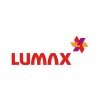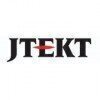
i
Sona Comstar
Filter interviews by
Sona Comstar Diploma Trainee Engineer Interview Questions and Answers for Freshers
Sona Comstar Diploma Trainee Engineer Interview Experiences for Freshers
1 interview found
Interview Questionnaire
3 Questions
- Q1. Micrometer least count
- Q2. Si and ci engine
- Q3. Vernier least count
Top trending discussions






Interview questions from similar companies

I applied via Recruitment Consultant and was interviewed in Jun 2019. There were 3 interview rounds.
Interview Questionnaire
2 Questions
- Q1. About lathe machines and
- Q2. Previous company work
- Ans.
I worked as a Junior Engineer at XYZ Company for 2 years, where I gained experience in project management and technical troubleshooting.
Managed multiple projects simultaneously
Collaborated with cross-functional teams to achieve project goals
Resolved technical issues on the production line
Implemented process improvements to increase efficiency
Interview Preparation Tips

Diploma Trainee Engineer Interview Questions & Answers
CIE Automotiveposted on 1 Sep 2020
I applied via Campus Placement and was interviewed in Aug 2020. There was 1 interview round.
Interview Questionnaire
5 Questions
- Q1. About your self?
- Q2. What is tolerance?
- Ans.
Tolerance refers to the acceptable range of variation in a measurement or specification.
Tolerance is important in manufacturing to ensure that products meet the required specifications.
It is usually expressed as a range of values or as a maximum deviation from a target value.
For example, if a part is supposed to be 10 cm long with a tolerance of +/- 0.1 cm, it means that the actual length can be anywhere between 9.9 cm...
- Q3. How do you mean by angle projection?
- Ans.
Angle projection is a method of representing a 3D object on a 2D plane using angles.
It involves projecting the object onto a plane at a specific angle.
The angles used in the projection are typically 45 degrees or 30 degrees.
This method is commonly used in engineering and architecture for creating technical drawings.
It helps to show the true shape and size of the object in a clear and concise manner.
Examples of angle pr...
- Q4. Engineering drawing symbols?
- Q5. CNC best question like 'M' code 'G' code?
Interview Preparation Tips

Diploma Trainee Engineer Interview Questions & Answers
Hitachi Astemoposted on 5 Jul 2021
Interview Questionnaire
1 Question
- Q1. About company Products
Interview Preparation Tips
Speaking strength.
Self motivation

I applied via Recruitment Consultant and was interviewed before Jun 2020. There was 1 interview round.
Interview Questionnaire
7 Questions
- Q1. Which types of lacquer used on lens and Housing ?
- Ans.
The types of lacquer used on lens and housing include acrylic lacquer, polyurethane lacquer, and epoxy lacquer.
Acrylic lacquer is commonly used on lens and housing due to its high transparency and UV resistance.
Polyurethane lacquer provides excellent durability and chemical resistance, making it suitable for lens and housing.
Epoxy lacquer offers superior adhesion and impact resistance, making it a preferred choice for
- Q2. What is size fine filter ?
- Ans.
A size fine filter is a type of filter used to remove small particles or impurities from a fluid or gas.
Size fine filters are commonly used in industries such as manufacturing, pharmaceuticals, and food processing.
They are designed to capture particles that are smaller than what can be filtered by regular filters.
These filters can be made of various materials such as paper, fabric, or synthetic fibers.
Examples of size ...
- Q3. On which material direct metalizing is applicable ?
- Ans.
Direct metalizing is applicable on materials that can conduct electricity.
Direct metalizing is a process of coating a non-metallic surface with a thin layer of metal.
The material should be able to conduct electricity for direct metalizing to be applicable.
Materials like plastic, glass, and ceramics can be direct metalized.
Direct metalizing is commonly used in the automotive, aerospace, and electronics industries.
- Q4. PC Material
- Q5. How much UV energy is required for curing?
- Ans.
The amount of UV energy required for curing depends on the type of material being cured and the intensity of the UV light.
UV energy required for curing varies depending on the material being cured
Intensity of the UV light also affects the amount of energy required
UV energy is typically measured in Joules per square centimeter (J/cm²)
Examples of materials that require UV curing include adhesives, coatings, and inks
- Q6. 2500 ~ 3500
- Q7. How much DFT is required as per standard ?
- Ans.
The amount of DFT required as per standard varies depending on the specific industry and project requirements.
The required amount of DFT (Design for Testability) is determined by industry standards and project specifications.
Different industries may have different standards for DFT.
The complexity and size of the project also influence the amount of DFT required.
DFT techniques include scan chains, built-in self-test (BI...
Interview Preparation Tips

I applied via Walk-in and was interviewed in Dec 2021. There were 8 interview rounds.

(2 Questions)
- Q1. Basic information of condidate
- Q2. Job discription of machine
(2 Questions)
- Q1. Programming of cnc vmc
- Ans.
Programming of CNC VMC involves creating instructions for the machine to follow in order to produce a specific part.
Requires knowledge of programming languages such as G-code and M-code
Involves creating a step-by-step process for the machine to follow
Requires understanding of the machine's capabilities and limitations
May involve creating custom tool paths for specific parts
Examples include programming a CNC VMC to prod...
- Q2. Code of machining for making program
- Ans.
The code of machining for making a program involves creating instructions for a machine to follow in order to produce a desired output.
The program should include specific instructions for the machine to follow, such as tool selection, cutting speed, and feed rate.
The code should be optimized for efficiency and accuracy.
It is important to consider the material being machined and adjust the program accordingly.
Testing an...
(2 Questions)
- Q1. Given program for making a program of auto shaft
- Q2. Another given a making program on cnc machine
(2 Questions)
- Q1. Job profile discussion
- Q2. Job profile discussion about shop flor
(2 Questions)
- Q1. Group discussion with team
- Q2. Group discussion with team of production and plant head
Given a problem for solving on shop floor
Group discussion with team of production and plant head
Interview Preparation Tips
Skills evaluated in this interview

I applied via Recruitment Consulltant and was interviewed in Jan 2023. There were 3 interview rounds.

1st round is aptitude test . This test is conducted offline . After clear this you go for 2nd round.
(2 Questions)
- Q1. Your previous work experience
- Ans.
I have previous work experience as a Diploma Trainee Engineer.
Worked as a trainee engineer at XYZ Company for 1 year
Assisted senior engineers in designing and implementing engineering projects
Gained hands-on experience in troubleshooting and maintenance of equipment
Collaborated with cross-functional teams to ensure project success
Participated in regular training sessions to enhance technical skills
- Q2. Your family details and your full introduction.
- Ans.
I will provide my family details and a full introduction.
My name is [Your Name].
I come from a family of four, including my parents and a younger sibling.
My father is a retired engineer and my mother is a homemaker.
I completed my Bachelor's degree in Engineering from [University Name].
I have a strong interest in technology and problem-solving.
During my studies, I actively participated in various technical projects and c...
Interview Preparation Tips

I applied via Campus Placement and was interviewed before Feb 2021. There were 2 interview rounds.
(4 Questions)
- Q1. Thermal Engineering and industrial engineering
- Q2. Introduction of working engine
- Ans.
A working engine is a mechanical device that converts energy into mechanical motion.
Engines are commonly used in vehicles, machinery, and power generation.
They typically operate by burning fuel to create a controlled explosion, which drives pistons or turbines.
Different types of engines include internal combustion engines, steam engines, and gas turbines.
Engines require various components such as cylinders, pistons, va...
- Q3. Diesel engine petrol engine difference
- Ans.
Diesel engines and petrol engines differ in their fuel type, ignition process, and efficiency.
Fuel type: Diesel engines use diesel fuel, while petrol engines use gasoline.
Ignition process: Diesel engines use compression ignition, while petrol engines use spark ignition.
Efficiency: Diesel engines are generally more fuel-efficient than petrol engines.
Examples: Cars, trucks, and buses often use petrol engines, while heavy...
- Q4. What is piston, crank shaft, bearing
- Ans.
A piston is a component in an engine that moves up and down in a cylinder, converting pressure into mechanical motion. A crankshaft is a rotating shaft that converts reciprocating motion into rotational motion. A bearing is a device that supports and reduces friction between moving parts.
Piston: Moves up and down in a cylinder, sealed by piston rings. Transfers force from expanding gases to the crankshaft.
Crankshaft: C...
(1 Question)
- Q1. Self introduction and normal technical question

I applied via Naukri.com and was interviewed in Nov 2023. There were 2 interview rounds.
(1 Question)
- Q1. Why you want to join us
(2 Questions)
- Q1. What is your role and responsibilities in privious company.
- Q2. What is your strength and weakness
Interview Preparation Tips

I applied via Naukri.com and was interviewed in Jan 2024. There was 1 interview round.
(2 Questions)
- Q1. Line balancing & cycle time study
- Q2. Manpower handling
Sona Comstar Interview FAQs
Tell us how to improve this page.
Sona Comstar Interviews By Designations
- Sona Comstar Production Engineer Interview Questions
- Sona Comstar Quality Engineer Interview Questions
- Sona Comstar Electrical Maintenance Engineer Interview Questions
- Sona Comstar Senior Engineer Interview Questions
- Sona Comstar Diploma Trainee Engineer Interview Questions
- Sona Comstar Assistant Manager Interview Questions
- Sona Comstar Maintenance Engineer Interview Questions
- Sona Comstar R&D Engineer Interview Questions
- Show more
Interview Questions for Popular Designations
- Diploma Mechanical Engineer Interview Questions
- Diploma Electrical Engineer Interview Questions
- Diploma Apprentice Trainee Interview Questions
- Diploma Electronics Engineer Interview Questions
- Diploma Civil Engineer Interview Questions
- Diploma Chemical Engineer Interview Questions
- Diploma Engineer Trainee - DET Interview Questions
- Diploma Automobile Engineer Interview Questions
- Show more
Diploma Trainee Engineer Interview Questions from Similar Companies
Fast track your campus placements
Sona Comstar Diploma Trainee Engineer Reviews and Ratings
based on 11 reviews
Rating in categories
|
Senior Engineer
165
salaries
| ₹4.4 L/yr - ₹14.5 L/yr |
|
Junior Engineer
154
salaries
| ₹1.5 L/yr - ₹6 L/yr |
|
Engineer
150
salaries
| ₹2.8 L/yr - ₹10 L/yr |
|
Assistant Manager
124
salaries
| ₹7.5 L/yr - ₹16.6 L/yr |
|
Quality Engineer
108
salaries
| ₹1.2 L/yr - ₹6 L/yr |

Ceat Tyres

UNO Minda

Apollo Tyres

Exide Industries
- Home >
- Interviews >
- Sona Comstar Interview Questions >
- Sona Comstar Diploma Trainee Engineer Interview Questions for Fresher











